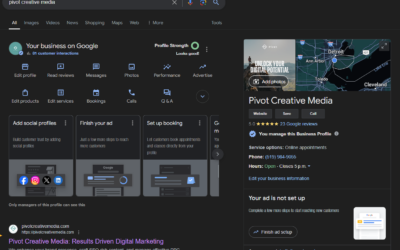Understanding Meta Titles
Meta titles are important elements for SEO. They appear as clickable links on search engine result pages (SERPs) like Google. These titles tell both users and search engines what your webpage is about.
A meta title is an HTML element placed in the <head> section of your webpage’s code. It is a part of the page’s metadata. Properly crafting meta titles helps improve your website’s visibility.
Good meta titles should be:
- Concise: Between 55 to 65 characters.
- Descriptive: Clearly explain what the page is about.
- Keyword-rich: Include relevant keywords for better SEO.
Example of a Meta Title in HTML:
<title>Learn HTML - Basics of Web Development</title>
Search engine algorithms use meta titles to understand the content of your page. This helps determine where your page should rank in SERPs. Ensure your meta title is relevant to your content and includes keywords naturally.
Best Practices:
- Avoid Keyword Stuffing: Don’t fill your title with too many keywords.
- Use Branding: Include your brand name at the end, if appropriate.
- Keep it Readable: Avoid using all caps or special characters.
Search engines like Google use these titles as an indicator for relevance in their algorithms. Well-written meta titles can increase your click-through rate, driving more traffic to your site. Make sure your titles are well-crafted to maximize their impact.
The Importance of Meta Titles for SEO
Meta titles play a crucial role in boosting your website’s visibility and attracting more traffic. They can influence your search engine rankings and impact your click-through rates (CTR).
Influence on Rankings
Meta titles are significant for search engine optimization (SEO) because they help search engines understand the topic and content of your webpage. When you incorporate relevant keywords in your meta title, it signals to search engines that your content is relevant to specific queries.
This can improve your search engine rankings. A well-optimized meta title increases the chances of your webpage appearing higher up in search results. Remember, search engines often use meta titles to display your page in results, so it’s essential for ranking and visibility.
Unique and descriptive meta titles also make your content more attractive to search engines. Keyword stuffing, where too many keywords are used, can hurt your rankings. Aim for a balance of relevance and simplicity to achieve the best results.
Impact on Click-Through Rates
Meta titles are the first impression users get of your webpage when it appears in search results. A compelling meta title captures their attention and encourages them to click on your link. This ultimately drives more organic traffic to your website.
A well-crafted meta title should be clear, concise, and include keywords that are relevant to the user’s search query. This increases your click-through rates (CTR), which is an important metric for SEO. High CTR can lead to better rankings over time since search engines may see your page as valuable and relevant.
Using numbers, questions, or powerful words in your meta titles can also increase CTR. For example, “Top 10 Tips for SEO Success.” Engaging meta titles stand out in search results and can significantly impact your website’s traffic.
Creating Effective Meta Titles
A well-crafted meta title is crucial for attracting users and improving search engine rankings. Focus on staying concise, using strategic keywords, and incorporating branding.
Length and Format Best Practices
Meta titles should be concise and within a specific length to ensure visibility. Aim for 50-60 characters to prevent titles from being cut off in search results. Use title case to help readability, capitalizing important words while keeping conjunctions and prepositions in lower case.
Avoid keyword stuffing. Instead, place the primary keyword near the beginning to catch attention quickly. Ensure the title is informative and accurate, giving a clear idea of the page’s content. Sequence the keywords naturally, constructing phrases that sound appealing to users.
Strategic Keyword Use
Keyword research is essential for creating effective meta titles. Utilize tools like Google Keyword Planner or SEMrush to identify keywords with high search volume and relevance. Incorporate your primary keyword prominently but naturally within the title.
Include secondary keywords that support the primary keyword to enhance SEO. Ensure these keywords align with the user’s search intent, making your meta title relevant and compelling. For example, if the primary keyword is “best laptops,” a secondary keyword could be “2024 reviews” to attract more targeted searches.
Incorporating Branding and Marketing
Adding your brand name to the meta title can enhance recognition and trust. Position the brand name at the end to keep the focus on the main content and keywords. This strategy helps in maintaining the SEO value while promoting the brand effectively.
Utilize marketing tactics by including a call-to-action or power words. Words like “exclusive,” “best,” or “free” can increase click-through rates by sparking interest. Ensure the title remains brief and to the point, avoiding unnecessary duplication of words. Craft titles that create a balance between SEO benefits and appealing marketing hooks.
Technical Aspects of Meta Titles
Meta titles are crucial for SEO and user experience. Understanding the technical aspects can help create effective titles that improve website visibility.
HTML Code Considerations
Meta titles are included within the <head> section of HTML. The code to add a meta title looks like this:
<title>Your Meta Title Here</title>
Ensure your meta titles are unique for each page, descriptive, and within the recommended length of 50-60 characters. This length ensures that search engines display the full title without truncation.
Formatting is also important. Avoid special characters that might not display correctly in some browsers or search results. Use keywords naturally to make the title relevant and increase your chances of ranking higher. Avoid stuffing the title with too many keywords to keep it readable and user-friendly.
Avoiding Common Meta Title Mistakes
Several common mistakes can negatively impact the effectiveness of meta titles. One frequent mistake is using duplicate titles across multiple pages. Unique titles help search engines differentiate between pages and rank them appropriately.
Another mistake is creating titles that are too long or too short. Titles that exceed 60 characters may get cut off, while very short titles may not provide enough information about the page content.
Keyword stuffing is another pitfall. While it’s important to include keywords, overloading the title can make it look spammy and hurt your ranking. Focus on readability and clarity instead. Also, avoid using vague titles that don’t accurately describe what the user will find on the page.
By avoiding these mistakes, you can create meta titles that are both search-engine friendly and appealing to users.
Optimizing Meta Titles for Different Types of Content
Creating effective meta titles involves understanding the content type you are working with and tailoring your approach to best suit the user and search engine needs. Focus on clarity, relevance, and using specific keywords to attract the target audience.
Product Pages and E-commerce
When optimizing meta titles for product pages, clarity and relevance are key. Include the product name, brand name, and a feature that stands out. This helps users quickly understand what the product is and boosts search engine rankings.
For example, “Nike Air Max 270 – Comfortable Running Shoes for All-Day Wear” is effective. It includes the brand name, product name, and a key feature, which can improve click-through rates (CTR).
Consider using secondary keywords that relate to the product. This makes the page title more appealing and hits more search terms. It’s also useful to perform A/B testing on meta titles to see which ones perform better and adjust accordingly.
Blog Posts and Articles
Meta titles for blog posts should be catchy and relevant to the content. Use keywords that reflect the main topic and draw readers in. A good blog post title not only sums up the content but also teases what’s inside, enticing users to click.
An example might be, “10 Tips for Boosting Your SEO in 2024″. Here, it is clear, includes a promise of valuable information, and is specific to the content.
Avoid keyword stuffing but include relevant phrases. Think about the target audience and what they are searching for. Use questions or numbers to make the title more engaging.
Landing Pages and Services
Meta titles for landing pages should be direct and action-oriented. These pages often have a specific goal, like converting visitors into leads, so the title should reflect that.
For instance, “Free Marketing Consultation – Grow Your Business Today!” This title includes a strong call-to-action (CTA), which can inspire users to take the next step.
Use target keywords that are relevant to the services offered, and align them with user intent. It’s essential to be clear about what service or benefit the user will receive, as this can significantly impact conversion rates.
Evaluate your titles’ performance and make changes if necessary. Small tweaks can often lead to significant improvements in user engagement and search engine rankings.
Tracking and Improving Meta Title Performance
Tracking and improving meta title performance is crucial for better visibility and click-through rates. This involves using specific tools, testing different titles, and keeping up with search engine updates to keep your meta titles effective.
Using SEO Tools and Analytics
You should start by using SEO tools like Google Search Console, SEMrush, and Google Keyword Planner. These tools help you see how your meta titles perform in search engine result pages (SERPs).
Google Search Console gives you data on click-through rates and how often your site appears in searches. SEMrush can show the effectiveness of your keywords. Google Keyword Planner helps find the best keywords to improve your ranking.
By using these tools, you can identify which meta titles generate the most clicks and organic traffic.
The Role of A/B Testing
A/B testing involves creating two versions of a meta title to see which one performs better. This method helps you understand what works best for attracting visitors.
To conduct an A/B test, change one element of your meta title and compare the results. For example, test different keywords or phrasings. Track click-through rates and adjust based on which version performs better.
By continually testing and refining your meta titles, you can increase your site’s visibility and rankings in search results.
Responding to Search Engine Updates
Search engines like Google frequently update their algorithms, which can affect how your meta titles perform. It is important to stay updated with these changes and adjust your strategies accordingly.
Keep an eye on updates through industry blogs or Google’s announcements. Sometimes, a change might require you to re-evaluate your keywords or emphasis in your meta titles.
By being proactive and responsive to these updates, you ensure your meta titles remain effective and your site maintains or improves its rankings.
Frequently Asked Questions
Understanding what makes a good meta title involves knowing effective examples, the differences from meta descriptions, and key factors for various types of pages like shops. It also includes knowing the ideal length and the best practices for SEO-friendly meta titles.
What are examples of effective meta titles?
Effective meta titles are concise, descriptive, and include relevant keywords. For example: “Best Italian Restaurants in Toronto – Top Places to Eat,” “Affordable Summer Dresses – Shop Now,” and “Learn Python Programming – Free Course.”
How does a meta title differ from a meta description?
A meta title is the main heading of a webpage seen in search results and browser tabs. It’s typically short and keyword-focused. A meta description is a longer snippet that provides a summary of the page’s content, aiming to attract clicks by providing more detail.
What considerations should be made when crafting a meta title for a shop?
When crafting a meta title for a shop, ensure it includes primary keywords and product or service names. It should also be attention-grabbing to encourage clicks. Consider adding promotional phrases like “Free Shipping” or “50% Off” to attract customers.
What is the recommended length for a meta title?
The recommended length for a meta title is between 50 to 60 characters. This ensures the title is fully visible in search results and not cut off, making it easier for users to understand what the page is about.
How can one create an optimal meta title?
To create an optimal meta title, start with primary keywords and keep it concise and descriptive. Craft it to be compelling while clearly representing the content of the page. Include branding if space permits, and avoid keyword stuffing.
What constitutes an ideal meta title for SEO purposes?
An ideal meta title for SEO purposes is one that is clear, concise, and contains the main keyword. It should accurately reflect the content on the page and entice users to click. Keywords should be placed at the beginning when possible for maximum impact.




